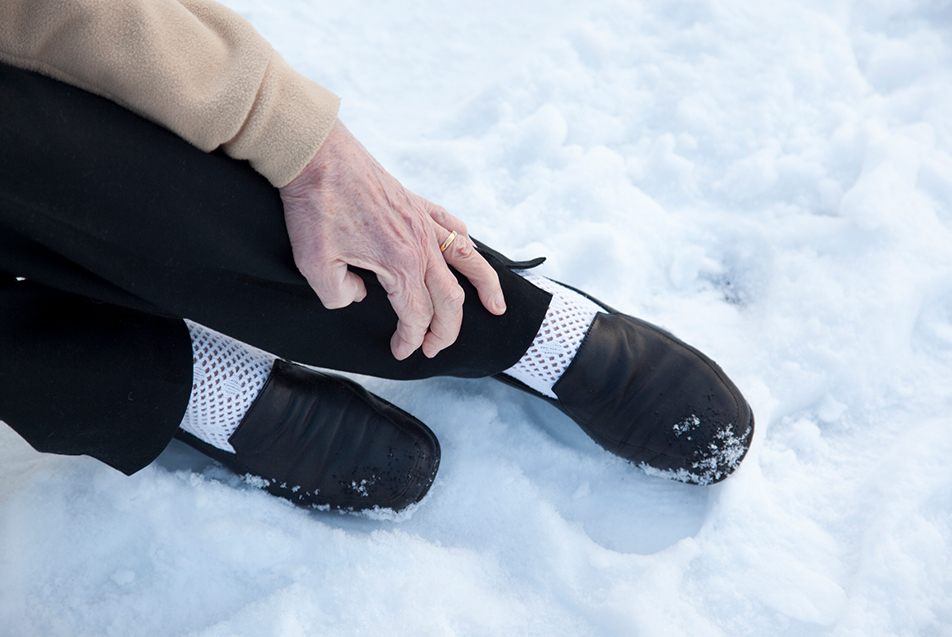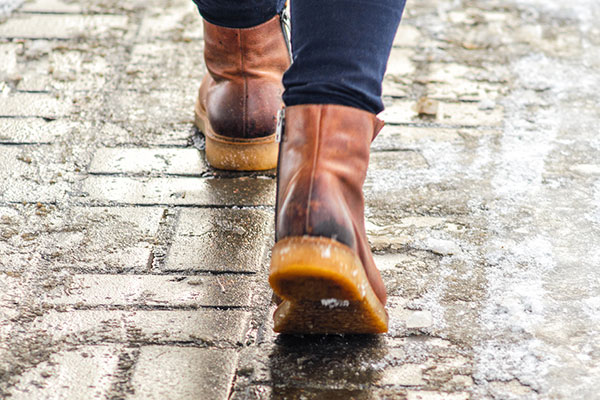
Winter is flexing its muscles in the Midwest, delivering snow, rain and icy conditions. We asked Thomas Gutwein, MD, Emergency Medicine, to share some information on fall prevention in this slick seasonal climate.
What are some of the injuries you see most often related to falls?
Wrist, knees, ankles and shoulders all happen frequently, but the head injuries are the most worrisome. We see head injuries more than anything, probably because they are the most serious and need urgent evaluation, especially when patients are on blood thinning medications.
What type of footwear would you recommend?
Not sandals; not open toe shoes of any kind. If you are walking outside on the ice, then definitely use rubber boots or shoe covers with a sole that grips. Your shoes/shoe covers should be waterproof to keep their feet dry and warm, and slip resistant on the soles.
How can people limit risk of fall around parking lots, public spaces?
Use a flashlight if it’s dark, or walk in well-lit areas. If it’s icy, walk on the snow beside the ice. Drop elderly loved ones off by the front door, where there has been salt or ice melting material deposited. Go slow. Take small steps, and move in more of a shuffle.
What should someone do if they fall and suspect injury?
First, collect your senses. If you suspect you broke or severely injured something, then you should not put weight on it (don’t walk on a painful foot or ankle). Get to a warm area, and if you’re able, go to a walk-in clinic, Ortho Express or the Emergency Department. The area of pain should be splinted or placed in a sling, or something protective that keeps it from moving.
What should someone do if they witness a fall?
The patient can be gently moved, but if the motion creates more pain, then first splint the area of pain while they are laying down. Give them plenty of assistance getting up, then use a wheel chair or set a chair right beside them to sit up in. If they hit their head and are unconscious, call 911. If they can sit on their own, let them get up slowly, don’t rush them (unless there is concern about further injury, like a falling tree or building). If they are able to move on their own, they usually won’t make an injury worse. Give them time and assistance, but don’t force any movement.
When should someone come in for treatment after a fall?
A patient should seek care if they experience a head injury and are on blood thinners. Or if they experience a head injury with altered mental status (not acting normal, asking the same question multiple times). They should also seek care if they experience an arm or leg injury where they cannot move a part of their body or it is deformed in any way.
If they can “use” the injured area with 75 percent or more of their normal function, then they can usually just be observed at home and take over-the-counter medication for pain control.



